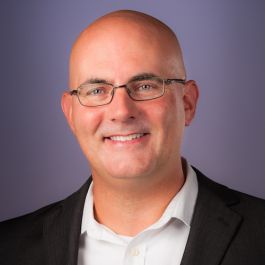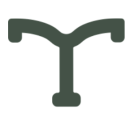Between the pandemic, remote work, the so-called “Great Resignation,” decentralization away from traditional tech hubs and tentative office reopenings, HR has had a heck of a year. And the pace of change shows no sign of slowing down.
The tech industry roared back to life throughout 2021, and employers are now considering how to recreate the best elements of in-person collaboration while engaging newly empowered remote workers. In this unprecedented era, leaders of people, HR and talent acquisition teams have turned to one another to compare notes on hiring, engagement and retention strategies that have worked (or failed) during the pandemic.
In the spirit of that industrywide collaboration, we checked in with leaders at five technology companies across the U.S. to discuss what they learned over the last year and how their experiences are informing their 2022 roadmaps.
Company background: WAVE.tv runs a portfolio of sports media brands built for modern fans on digital platforms. The company creates content, distributes programming and builds back-end products and services to serve fandoms across a wide range of sports.
What is the biggest change you’ve seen in the tech workplace in 2021?
Wiggins: Technology boomed in 2021, which is great to see. This boom caused the recruiting process to speed up, as individuals would be on the market then an offer would be accepted just days later. While engineers have always been in demand, it was rare to see the interview process accelerate so quickly. Additionally, the demand for tech recruiters was heightened given the engineering demand, so navigating how to find technical recruiters became a challenge in itself. All of this resulted in companies becoming more open to junior-level candidates — a sight for sore eyes because for a long time anyone who did not have three to five years of experience would only be considered later in a search. Seeing such inclusivity of more junior engineers is a significant and welcome change from previous years.
As a talent acquisition leader, how have you adapted to this change?
Wiggins: These conundrums led to us re-evaluate how WAVE.tv did interviews, and we determined it was best to condense interviews. Typically, there might be three rounds of interviews, which we shortened to two rounds with the final round having fewer people. I would gather market intelligence in the phone screens with candidates when asking about what other opportunities they were considering. I was sure to find out about the length of other interview processes. Responding to the market and adapting gave us a stronger strategic advantage.
“Changing the mindset of executives and leaders that feel in-person or hybrid is the best — or only — way to conduct business can and will be difficult in many instances.”
What is the biggest challenge awaiting people leaders in 2022?
Reardon: Everyone has become accustomed to working remotely since March 2020, and people are now hesitant to return to a position that will be in-person 100 percent of the time. This will be both the biggest challenge and the biggest advantage that people ops will face in 2022. Changing the mindset of executives and leaders that feel in-person or hybrid is the best — or only — way to conduct business can and will be difficult in many instances. But if that can be accomplished, the candidate pool for so many positions will open up significantly — not just to people in states other than the organization’s HQ but also to underrepresented groups that typically would have been excluded due to things like childcare or eldercare needs, commuting capabilities and disability.
Company background: Locus Robotics builds automated machines for use in warehouses and e-commerce distribution facilities. The Massachusetts-based unicorn has raised around $300 million in funding, including a $50 million investment in September.
What is the biggest change you’ve seen in the tech workplace in 2021?
The wholesale adoption of flexible work arrangements during the pandemic has shifted our view of centralized work in tech. Companies that previously had in-office work mandates had to become more flexible to adapt to the conditions of the pandemic, and now the talent market is expecting that flexibility to continue. Even in roles where on-site work is required, candidates are looking for flexible arrangements that will allow them to do work that is not site-critical from home. Companies are either working with this sea change in the industry and creating programs that attract talent, or they are forcing employees to return to the office workspace arbitrarily and fueling the much-reported “Great Resignation.”
As an HR leader, how have you adapted to this change?
We were already ahead of the curve on remote and flexible work: Much of our robotics software, customer success, marketing and sales teams were already fully remote or flex time pre-pandemic. We’ve pivoted to allowing remote or flexible work for nearly all of our roles as long as the work itself doesn’t physically require one to be on-site.
“Will the desire to be remote or significantly flexible last? Will there be a “Great Return” led by people tired of working from home?”
What is the biggest challenge awaiting HR leaders in 2022?
Our biggest challenge will be anticipating the needs of the talent market as we navigate the exit from the pandemic and adapting to the post-pandemic landscape. Will the desire to be remote or significantly flexible last? Will there be a “Great Return” led by people tired of working from home? How do we support employees who do continue to work from home, and should we redirect some of our infrastructure budgets to helping people set up comfortable, permanent workspaces in their homes? These are just some of the questions we will need to address as the talent market continues to adjust and rebound from the pandemic.
Company background: Lemonade uses AI and blockchain technology to power its insurance products, taking a fixed monthly payment and investing unpaid premiums in the ACLU and other nonprofits. The company, which is a certified B-Corporation, went public last year.
What is the biggest change you’ve seen in the tech workplace in 2021?
Those of us who have worked within tech environments are pretty used to things moving at a rapid pace. We’re especially accustomed to this at Lemonade, where we’re moving fast to revolutionize a century-old industry. That said, it felt like we somehow managed to quicken the pace even more throughout 2021. Projects were completed faster, decisions were made quicker, and we certainly saw the speed increase when it came to hiring. After a year when the world seemed to stop, 2021 offered the opportunity to start fresh in so many ways — and everyone was eager to get going.
As a talent acquisition leader, how have you adapted to this change?
As a company built on a digital substrate and powered by AI, we’re no stranger to creating more efficient processes. We took a look at our hiring process and system infrastructure at the start of 2021 to determine whether or not it could support the hyper-growth we were about to hit. We prioritized automation wherever possible and introduced more efficient, concise interview stages that allowed for a complete evaluation of skills and core competencies without any unnecessary steps. We knew we had to move quickly if we wanted to pull in top talent. We also partnered with our People Ops team to roll out new interview training courses and help prepare our hiring managers — especially those who were new to the business — for an increase in interviews across all departments.
“It can’t just be about what candidates can bring to the business — it also needs to be about what we can offer the candidate.”
What is the biggest challenge awaiting talent acquisition leaders in 2022?
Voluntary employee departures are increasing as we move into the post-Covid era, and the turnover tsunami is predicted to remain consistent over the next 12 months. We want to keep up the pace when it comes to hiring but continue to promote the many reasons why Lemonade is such a unique place to be. It can’t just be about what candidates can bring to the business — it also needs to be about what we can offer the candidate. This goes beyond monetary compensation. As a certified B-Corp and public benefit corporation, social impact is baked into our business model and mission and we are committed to a double bottom line.
Company background: Online retailer Health-E Commerce runs several direct-to-consumer brands where users can shop for tax-free healthcare products. The company seeks to simplify users’ interactions with their healthcare benefits, navigating complex eligibility requirements, flexible spending and health savings accounts, and Medicare benefits, among others.
What is the biggest change you’ve seen in the tech workplace in 2021?
For us, 2020 was relatively easy: We did what was right for the health and safety of our employees by switching to fully remote. The change that has caused challenges in 2021 is figuring out what is “right” and navigating external noise around office reopening policies and procedures, and then communicating our plans to our employees. Our colleagues want flexibility but also miss the office environment and connecting with their peers in person. It’s not a one-size-fits-all approach, and it became challenging to plan when the state of the pandemic changed so frequently.
As an HR leader, how have you adapted to this change?
We have regular check-ins with our employees and people managers to understand what their individual challenges are personally and professionally and meet them where they’re at. We are creative in our approach to team-building and engagement initiatives and have partnered with many external companies to focus on the development of our employees. The remote-first environment has allowed us to offer training sessions to a larger group of employees than would normally be able to fit in our physical conference rooms.
“What is the new sense of normal, and will it continue to be a work-in-progress like 2021?”
What is the biggest challenge awaiting HR leaders in 2022?
The unknown: What is the new sense of normal, and will it continue to be a work-in-progress like 2021 or will we be able to get into a groove and have an overall level of comfort among our employees?
Company background: Tecovas brings classic Western clothing — cowboy boots, jeans, hats and more — to the direct-to-consumer age, incorporating cutting-edge e-commerce technology with a timeless fashion genre. The company hired Incoll as its first director of technology this past May, with plans to take its software infrastructure to the next level.
What is the biggest change you’ve seen in the tech workplace in 2021?
Incoll: How we invest in technology. To remain innovative and customer-focused, we need to provide an experience and digital product that reflects the quality of our boots and products. Experiences tailored to the customer and seamless interactions all become our focus as we strive to meet customer expectations. We’ve seen a steep change over the past 12 to 18 months in how our customers interact with technology, and we intend on meeting that demand. We’re leaning further into our Google Cloud environment to provide a reliable data framework. Through BigQuery and Looker, we’re able to have data-driven conversations and see these implemented through various microservices, all within Google Cloud. We’ve made strategic investments in customer retention, acquisition and brand representation. We’re including multiple progressive technologies in the roadmap of our digital product, CDP, programmable media and optimization, as well as personalization efforts.
As an HR and recruiting leader, how have you adapted to this change?
Sultemeier: We are an organization that leads through culture, and we embrace challenging the long-held notion that work is best conducted in the office. We’ve seen a significant change across various areas of the business: how we work, hire and retain talent, connect with our customers and stay connected as a team. As we deliver an amazing customer and employee experience and promote efficient ways of working in our office and remotely, we are looking toward new technologies and progressive ways to stay connected. We are always investing in systems and tools to help support our growth and talent as we scale, which are all essential strategies for us as a growing DTC brand.
“Most people want the flexibility to work from home, and this has changed the way we view the structure of our organization, determine how best to keep everyone connected and lean into a flexible and adaptable style of working.”
What is the biggest challenge awaiting HR and recruiting leaders in 2022?
Sultemeier: Competing for top talent. As a growing Western wear lifestyle brand, job seekers might not see our mighty tech team at first glance. Additionally, understanding and adapting to a new way of working. Working from home has presented a unique opportunity for people to live and work in different states, but this has also presented its challenges when it comes to searching for top talent willing to relocate. Most people want the flexibility to work from home, and this has changed the way we view the structure of our organization, determine how best to keep everyone connected and lean into a flexible and adaptable style of working. People want to be seen and valued as more than just an employee, and we’re determined to continue to find ways to strengthen this in the future.













